Amazon Advertising: A Crash Course for Vendors

With the US election behind us, many shoppers are gearing up to make their holiday buys, and rumor has it Amazon’s going to be the first stop for almost half of them. Great news.
Unfortunately, something else has happened that’s not so great. Organic listings on Amazon are currently showing up even lower on the SERP these days.
Click to read: How to Optimize Amazon Listings to Convert Mobile Shoppers
Just check out what we see when we search for “noise canceling headphones”:
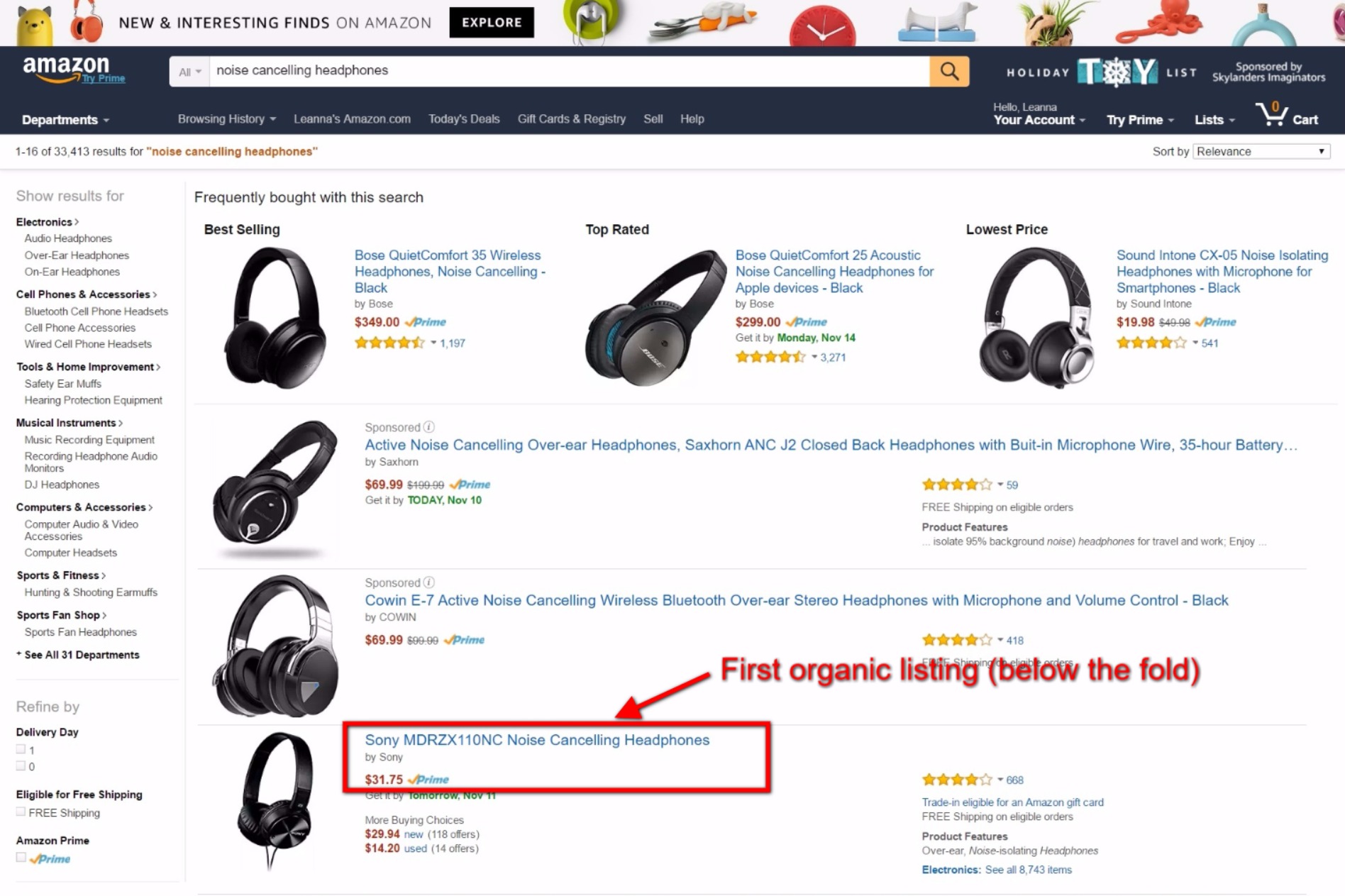
We had to scroll down below the fold to even get a glimpse of the first organic listing.
The entire above-the-fold shopping experience is dominated by Amazon Product Ads and Amazon’s new “Best Selling,” “Top Rated,” and “Lowest Price” selections (TBD if that’s here to stay).
Considering the fact that some studies show 92% of Googlers don’t go to page two, and 61.5% of searchers click on the first three listings that pop up–well, isn’t good news for those below the fold on Amazon.
As a vendor, you have access to Amazon advertising tools that are easy to set up and could mean the difference between meh and merry holiday sales this year. And we mean it–one of our clients grew sales 900% with the help of AMS.
We’ll run through each one of these below, what they require, and how to budget for them so you can get up and running ASAP.
Amazon Marketing Services (AMS) launched four years ago in 2012. Since then, Amazon advertising offerings have gone through a flurry of changes, including the discontinuation of initial Product Ads and Amazon Text Ads and renaming of eCommerce Ads to Product Display Ads.
They’ve finally evolved into three main Amazon advertising formats:
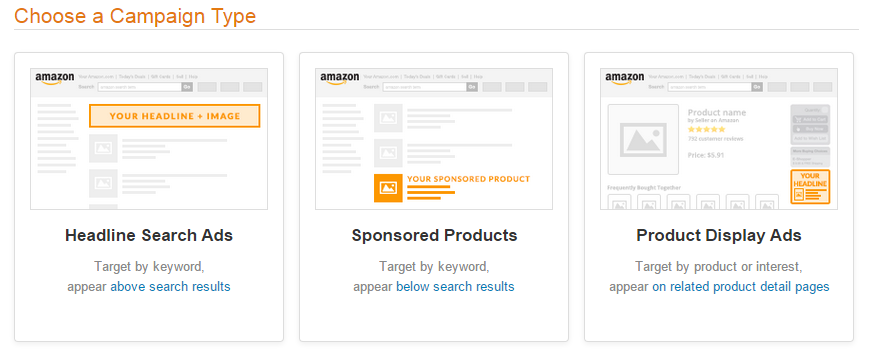
We’ll cover all of these, so you can come up with a strategy that’s just right for your business.
Sponsored Product ads are either Automatic (content-driven) or Manual (keyword-driven) targeted ads that show up on the right rail and top/bottom of SERP.
They are considered middle-of-the-funnel ads because they appear in locations where the buyer is likely comparing different options for a purchase.
These ads are very popular because they’re not only available to vendors, but also to 3P sellers. They’re easy to create and they’re usually approved within an hour.
Amazon Sponsored Product Ads appear on desktop, mobile web, and mobile app.
Specifically, on desktop:
On mobile, Sponsored Product Ads can appear:
Remember, these ad locations aren’t set in stone–they are subject to change at any time according to Amazon’s discretion.
Desktop (Main SERP)
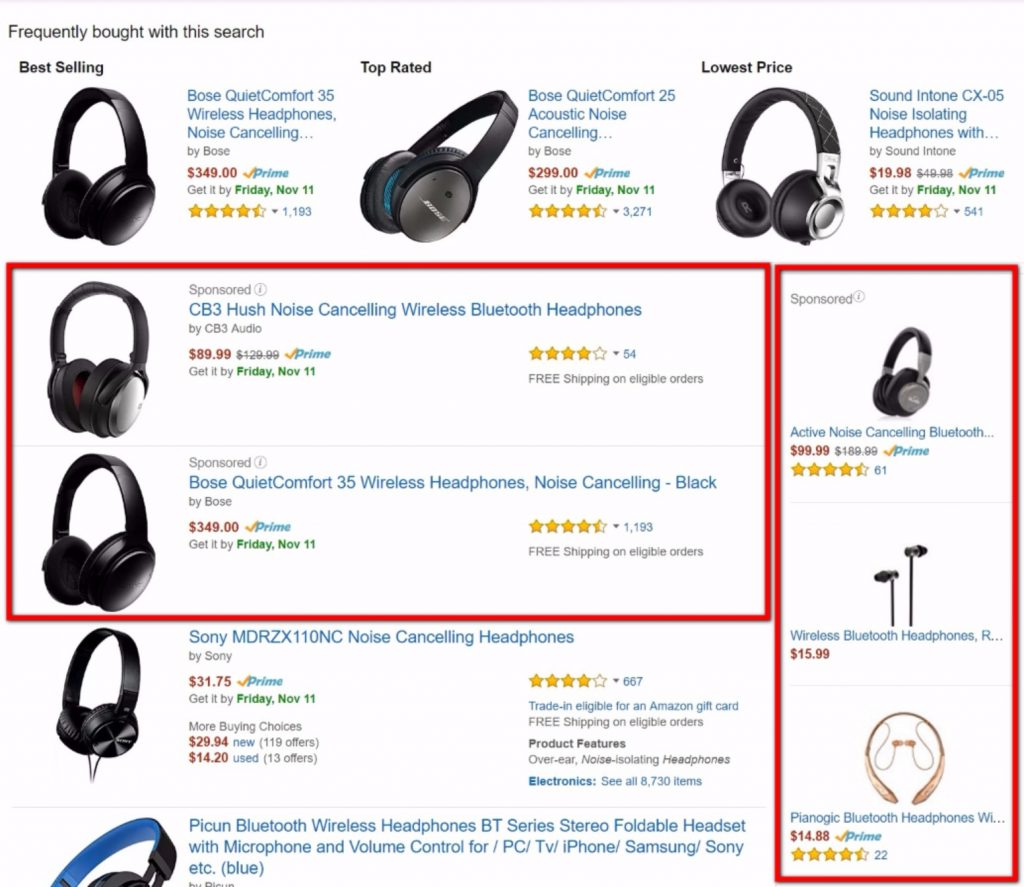
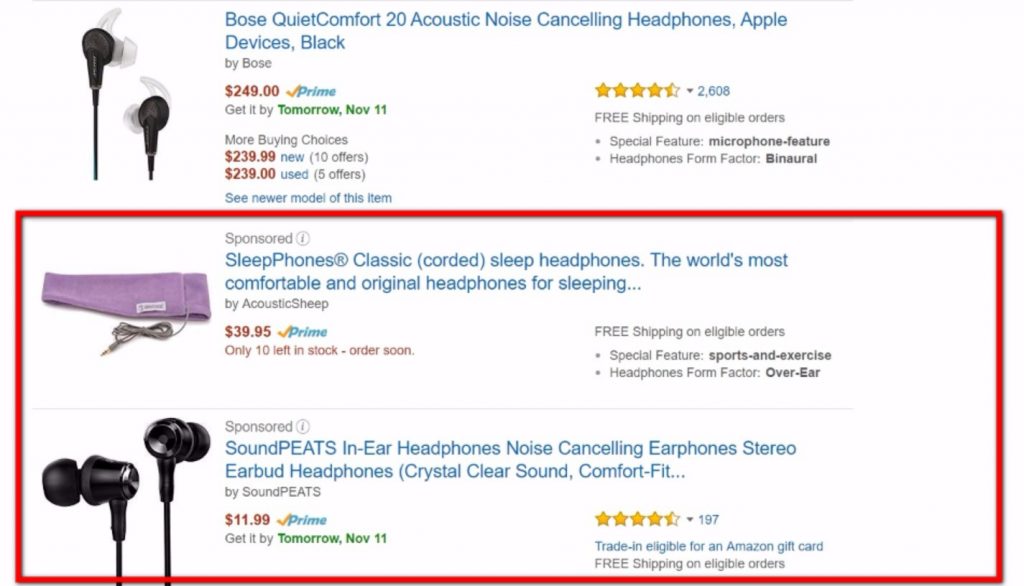
Desktop (Product Detail Page and Added-to-Cart Page)

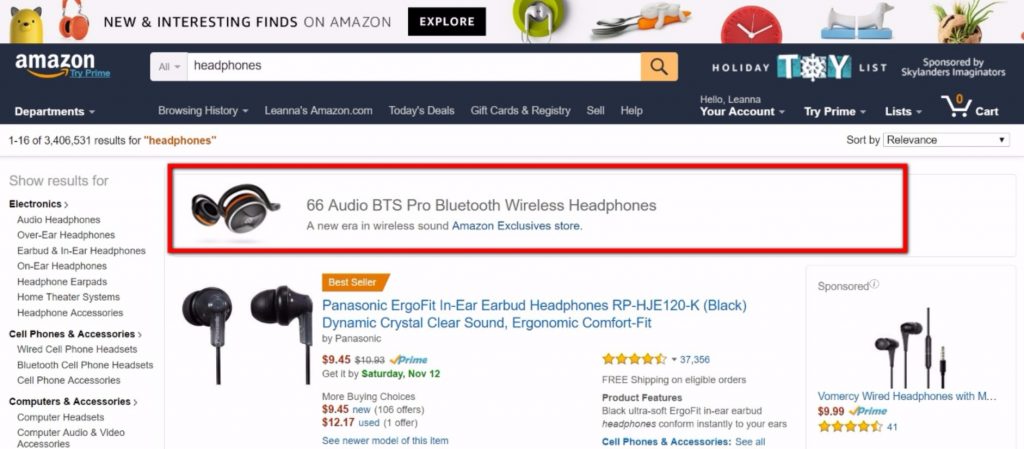
Mobile App
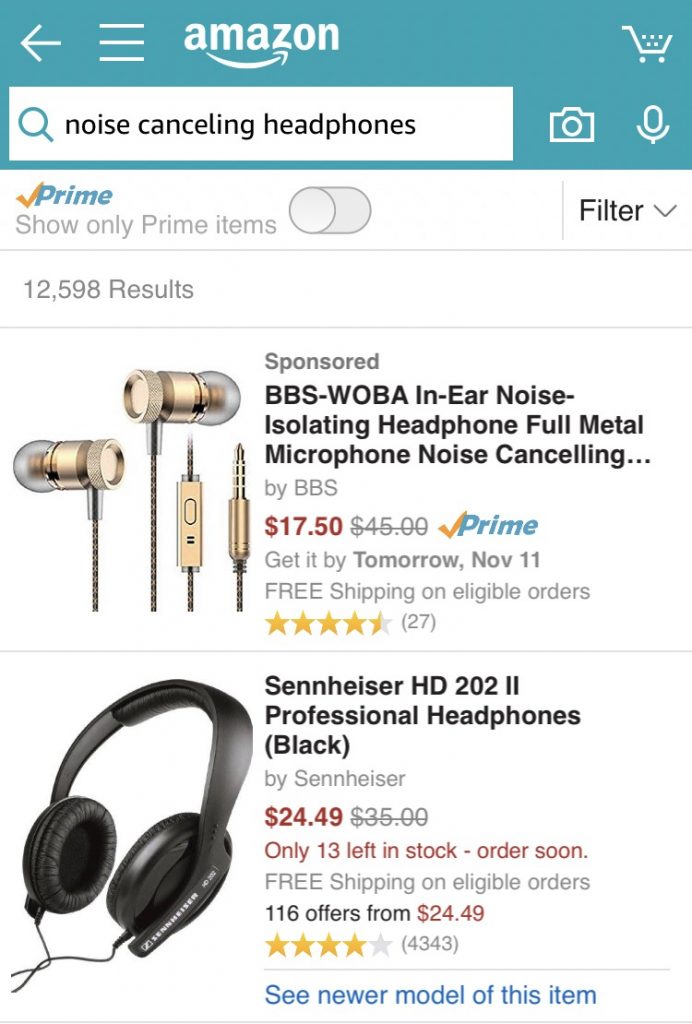
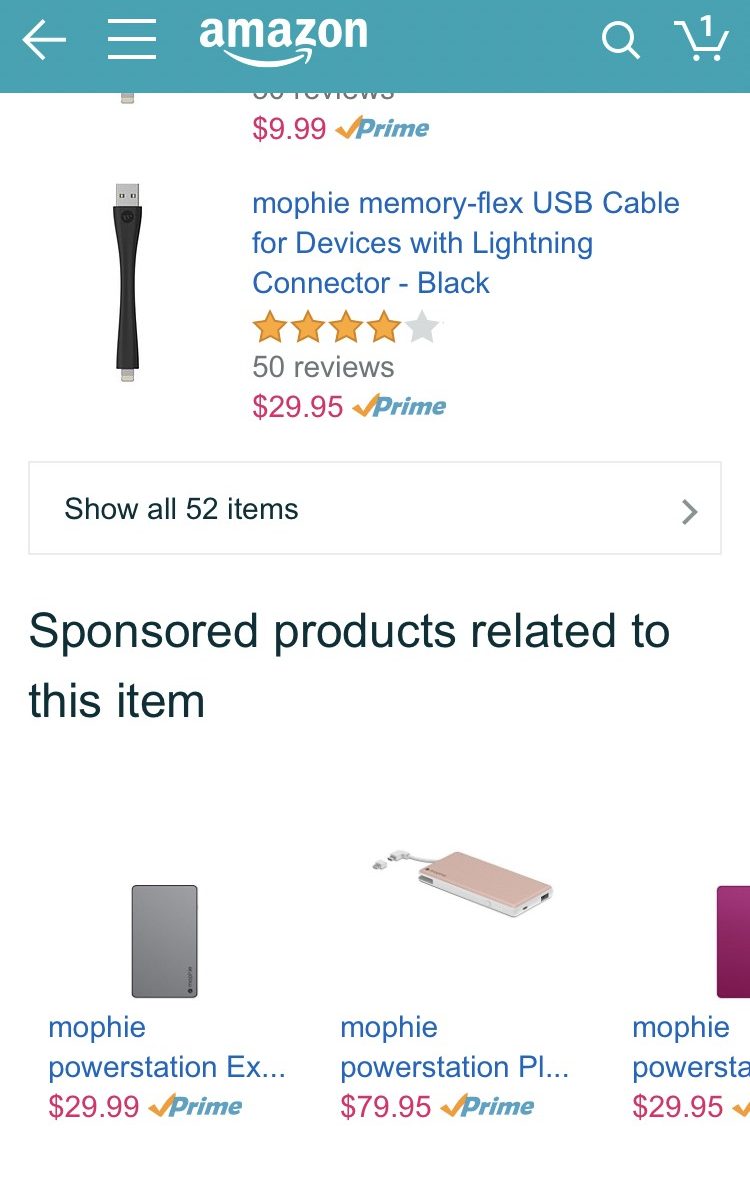
Although Sponsored Products are available to both 3P and Vendors, it doesn’t mean you can get up and running without fulfilling Amazon’s requirements. Here’s what you need to have in place before you start:
Oh, and there’s another little hiccup. Sponsored Products are currently available in these countries:
As stated above, only Buy box eligible products (not used, adult, or closed categories) are eligible to become a Sponsored Products Ad. Here are the categories that are open:

There are a couple decisions you have to make for targeting Sponsored Products: Automatic vs. Manual targeting and–if you choose the latter–keyword selections.
Automatic vs. Manual Targeting
If you select Automatic targeting, Amazon algorithmically serves up ads for products within an ad group based on a combination of relevant content and conversion history data.
If you use Manual targeting, you are responsible for selecting optimal keywords.
A lot of sellers will harvest data from their Automatic campaigns then completely move over to Manual Campaigns. At CPC Strategy, we recommend you use a mix of both.
“A lot [of people] think it’s a waste of money [to invest in both Manual and Automatic Campaigns], but it’s not,” says Leo Carrillo, a Marketplace Channel Analyst at CPC Strategy. “It’s an investment in valuable data.”
Phrase Match vs. Exact Match Keywords
This isn’t really an either/or question, just like Manual vs. Automatic. The best keyword strategies include both single search term keywords and multiple term phrases. That way, you can get more products in front of your shoppers.
Here are some of the keyword types you can aim for, according to Amazon:

Learn more about optimizing Manual and Automatic Campaigns in our blog posts:
The minimum daily budget for Sponsored Product Ads is $1, and you’re only charged when a shopper actually clicks your ad.
You should bid the maximum amount you’re willing to pay for a click, which might not be in line with Amazon’s suggested bid.
Pat Petriello, Senior Marketplace Strategist at CPC Strategy, offers his insight:
I’d take Amazon’s page one suggested bid with a grain a salt and use actual click and conversion data to make bid modification decisions. We often find that to get on page one of the SERP is a much higher bid than what Amazon is suggesting, and as long as you’re getting an acceptable ACoS, you can keep pushing up the bid to get more volume while remaining profitable. During the holidays, Amazon suggests you consider increasing by 150-350% to stay competitive.
Advanced Amazon Sponsored Products Strategy
Headline Search Ads are keyword-driven and can appear across the top of the SERP. They’re only available to Amazon Vendors.
Headline Search Ads are considered top-of-the-funnel ads because potential customers who click through these banner-like ads are typically at the beginning of their buyer’s journey, and likely open to browsing.
Your ads may show up above Amazon.com search results on the Amazon mobile site and app.
Desktop
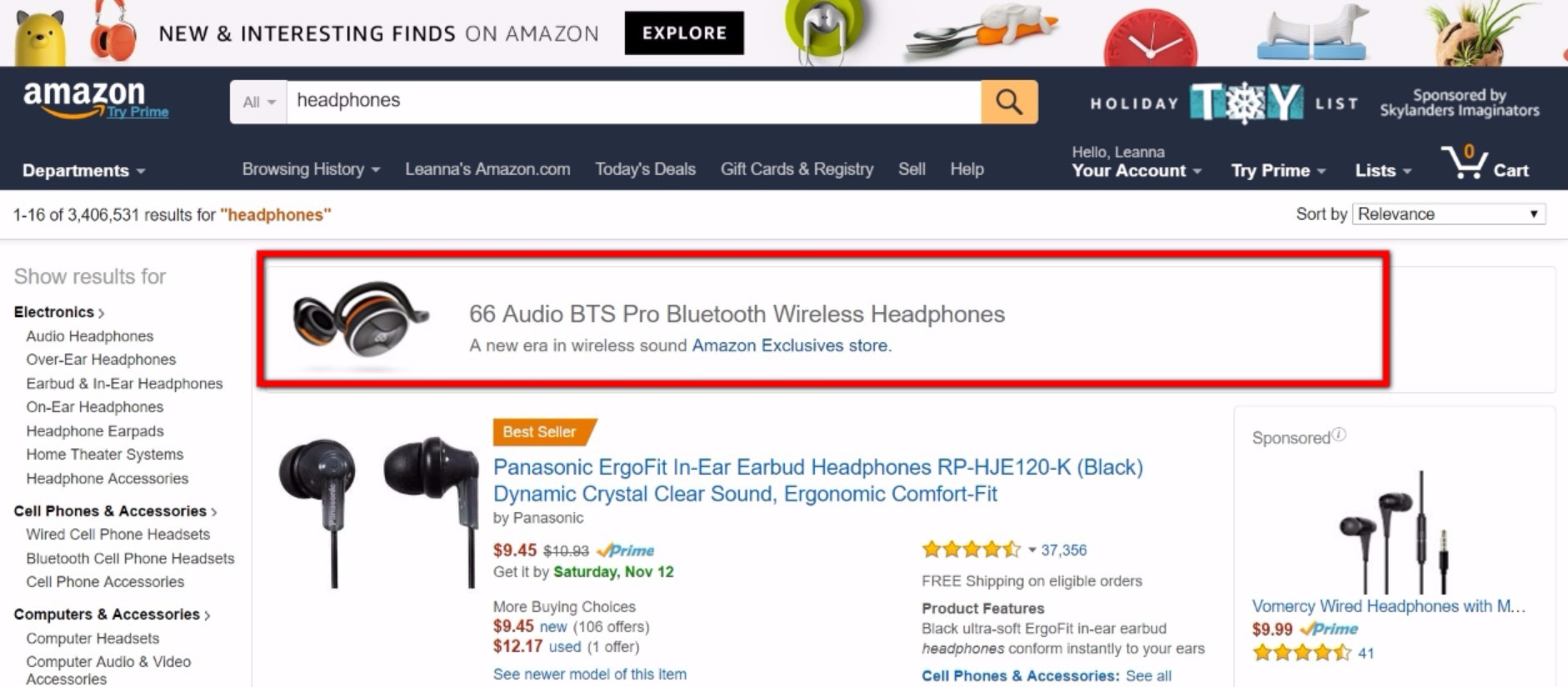
Mobile (Site, not App)
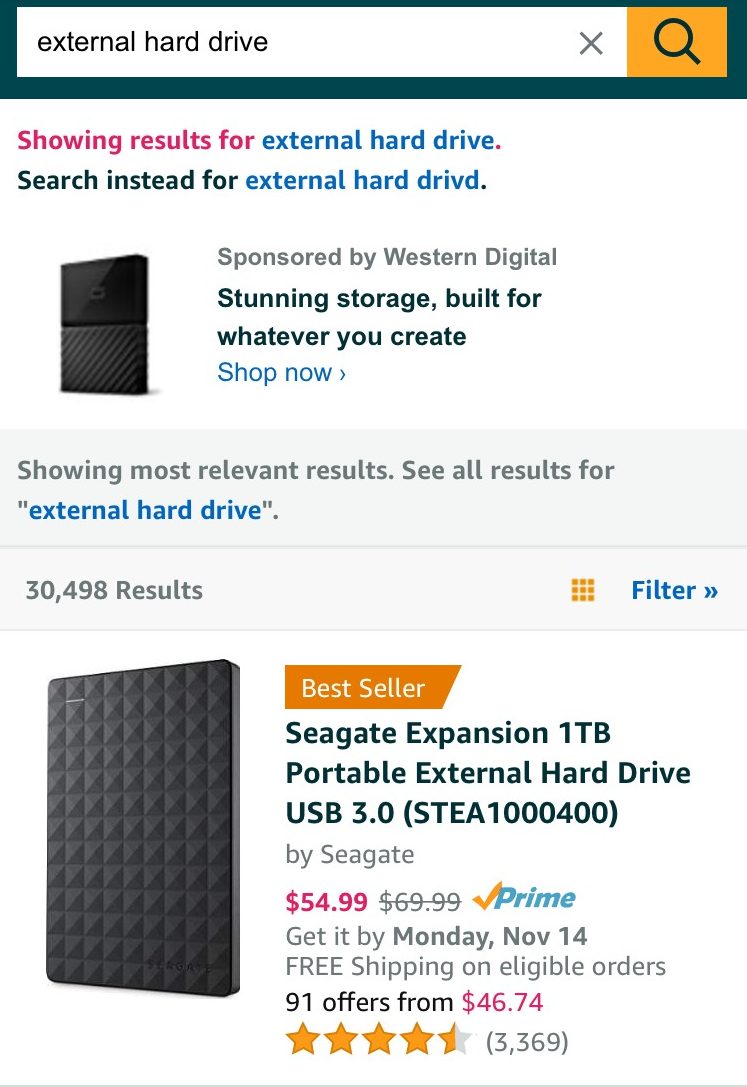
Headline Search Ads are only available to Amazon Vendors.
These types of ads can send traffic to:
There really is no right answer for which one works best–it all depends on your strategy and keywords. However, since these ads usually attract top-of-the-funnel searchers, we usually see the best results with the first option, a brand page.
If you’re targeting queries that are further down the funnel–for instance, prAna yoga pants–you should certainly consider sending traffic to a custom url with three types of yoga pants. That will make it easier for them to find what they clearly want than a brand page would.
AMS Brand Page
Your brand page allows customizable features such as a Hero image, Hero Product, Selection of Best Sellers, and Text Box. This is the most popular landing page, and for good reason–you can showcase your entire catalog.
Here’s an example of what this might look like on mobile:
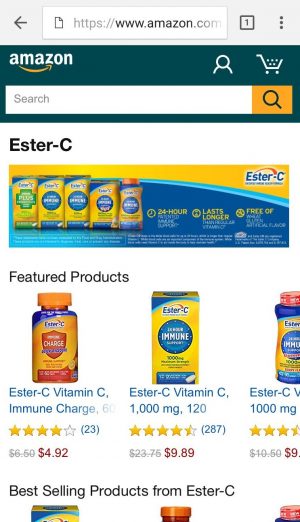
As you can see, there’s quite a good selection to see here, along with some stellar reviews. This is great for a purchaser who’s heard great things about Ester-C, or has tried it before, but is open to browsing through their best-sellers or trying something new.
Custom URL
Custom URLs should be made from three of your parent products–so make them good ones!
Create a custom landing page by entering 3+ ASINs in the Amazon search bar, separated by a “|” symbol. You can simply take the URL from the search results and copy and paste it in the appropriate location when creating your ad.
Here’s where you would do this:
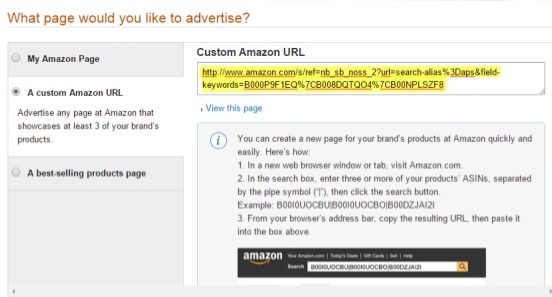
As we said before, it’s very powerful to match your products to customer queries if you use this format.
Best-Selling Products Page
This is a landing page featuring your brand’s best-selling products. This is another more top-of-the-funnel format but gives the customer additional trust in those products when they can see others have taken the leap and bought them.
If you couldn’t tell by now, the golden rule with Headline Search Ads is to reduce friction for your shoppers and put the most relevant products in front of them.
Just as with Sponsored Product Ads, you can choose to use the suggested keywords or use your own. However, there are a few limitations for supported keywords on Headline Search Ads vs. Sponsored Product Ads. Here’s what Amazon says:
Headline Search Ads supports Exact and Phrase match, but without variations such as stemmings, plurals and/or misspellings. At this time synonyms of the terms are not supported. Sponsored Products Ads allow Exact/Phrase/Broad matches, including negative matching for exact and phrase, considering variations of the terms.
Now, there’s one additional thing we should point out about Headline Search Ads.
Although they are keyword-driven like Sponsored Products, they also use ad copy to surface an ad.
The headline and text in your ad copy should match the keywords that are the MOST important for your product. That way, you should see increased relevancy and a more productive click through.
Because Headline Search Ads require more creativity than other types of Amazon ads, It’s probably worth A/B testing them.
You can adjust all of the following:
Here are Amazon’s suggestions for a fair A/B test.
You have the option to set up an average daily budget (at a $1.00 minimum) or a campaign budget ($100.00 minimum).
According to Amazon, “Campaign budget is the total amount you are willing to spend for a single campaign”, and remember, you will only pay for clicks on your ads, not impressions.
One thing to keep in mind: The ACoS for Headline Search Ads is typically a little higher than other ad formats, but we believe this pays off with an increase in organic sales.
Amazon’s Product Display Ads are either product-targeted or interest-based and can live on your (or a competitor’s) product detail pages. They’re only available for vendors.
These ads are considered bottom-of-the-funnel because they exist where customers are most likely on the verge of a purchase–on a specific product page, whether it’s yours or a competitor’s page. They’re the last ad your shopper will see before they click the “add to cart” button.
That target competitor pages gives Product Display Ads an “offensive and / or defensive” advertising strategy you may not get with other ads.
As we stated before, Product Display Ads are only available for vendors.
They also allow vendors to select where they want their ads to show up, whether it’s on your product detail page or your competitor’s.
These ads require less creativity than a Headline Search Ad, as the majority of your ad will be populated by your listing content. However, you must also provide a custom headline and logo.
Product Display Ads are shown on the desktop, mobile web, and mobile app across the following:
Desktop
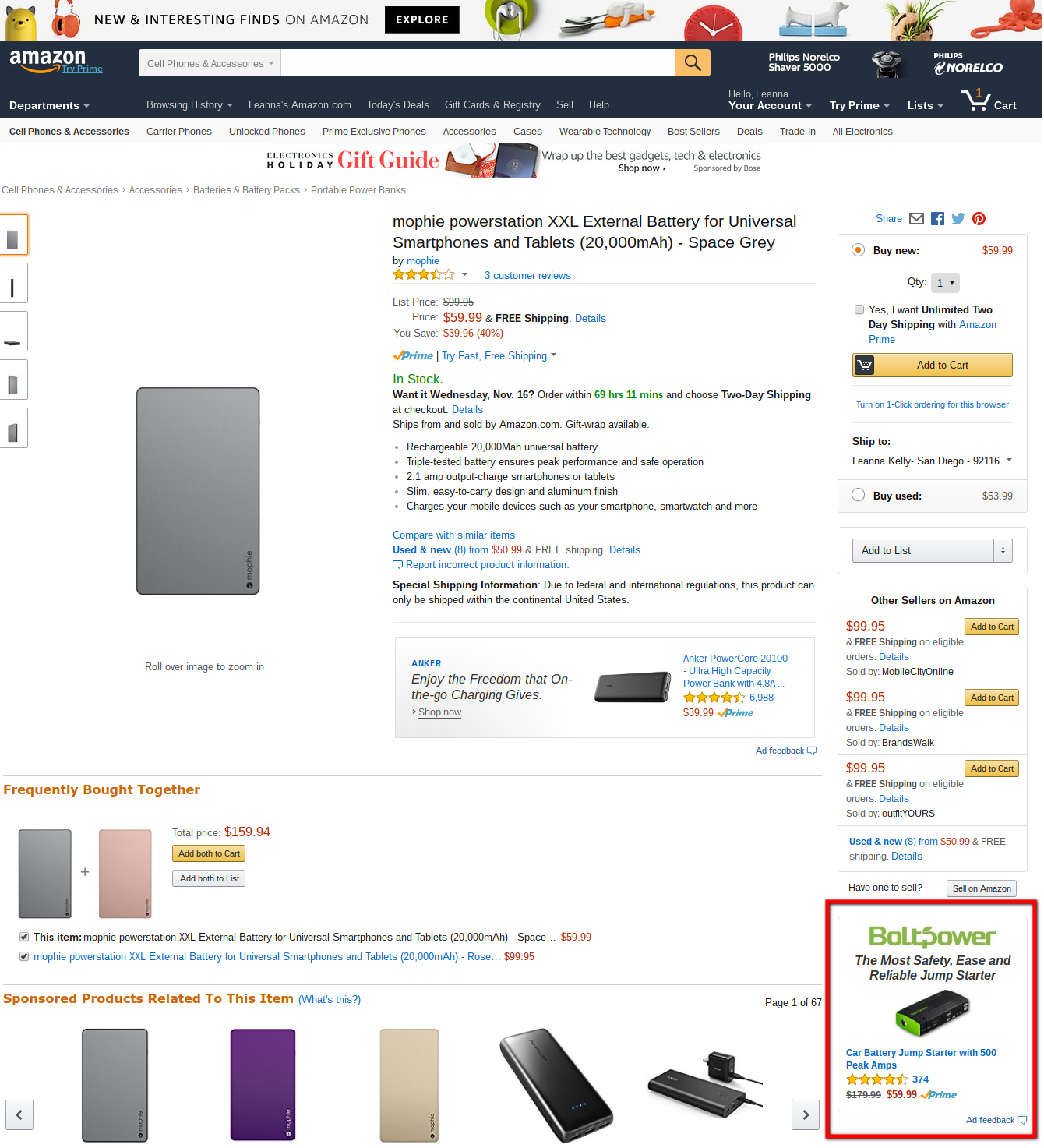
Product Display Ads are unique because advertisers must rely on either Product Targeting or Interest-Based Targeting options.
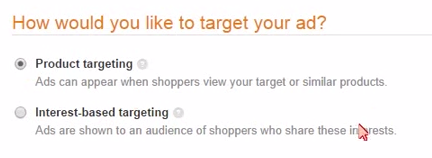
It’s worth noting Interest-based targeting leans toward a higher volume and lower conversion rate. That’s because these ads aren’t quite as targeted to users who are interested in similar products or have actually purchased those products in the past.
Product targeting allows advertisers to get much more granular, thus you may see a higher conversion rate. As always, test this with your products–if you offer something that’s never been sold on Amazon before, you may find Interest-based targeting is a better option.
Generally, you’ll bid less for Interest-based targeting and more aggressively for Product targeting. We would suggest you start by targeting both to see what works best for your products.
The minimum cost-per-click for Product Display Ads is $0.02. Just like Headline Search Ads, you can set an average daily budget (which is a $1.00 minimum) or a campaign budget (minimum of $100.00).
Hopefully, armed with these valuable AMS tools, you’ll see your ACoS decrease and your conversion rates increase. At the end of the day, even if your products are already ranking on page one of the Amazon SERP, these ads are a powerful way to set yourself apart from the pack.
Have you implemented AMS ads? What worked best for you? What are your biggest challenges? Share with us in the comments!
